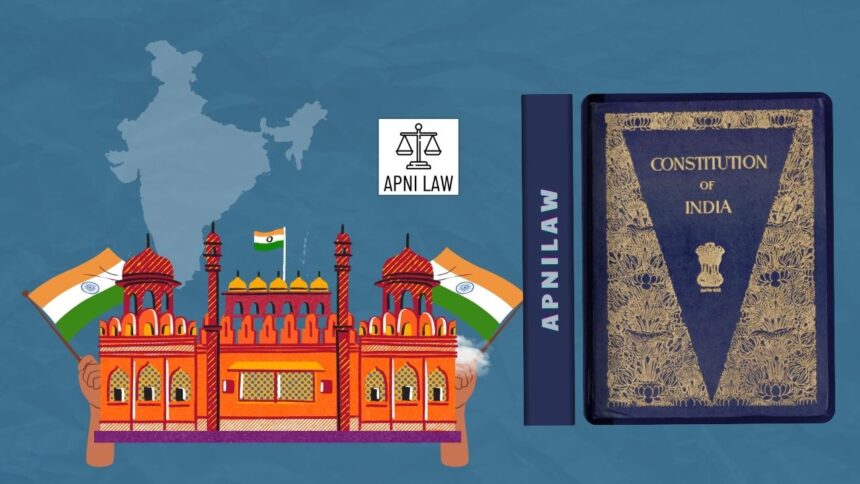What Is the 44th Amendment Act of 1978?
The 44th Amendment Act of 1978 stands as a major milestone in India’s democratic journey. The Morarji Desai government introduced this amendment to undo the constitutional distortions created during the Emergency period of 1975–1977. The amendment aimed to restore public trust in democratic institutions and re-establish the balance between the executive, legislature, and judiciary. It also strengthened citizen freedoms by reversing the changes that had weakened fundamental rights during the Emergency. This amendment became a symbol of India’s commitment to democracy, accountability, and constitutional morality.
Why Was the 44th Amendment Necessary?
The Emergency years revealed how unchecked executive power could harm democratic structures. During this period, civil liberties were suspended, institutions were suppressed, and the government exercised control without meaningful accountability. Many constitutional provisions had been altered to favor central authority. The 44th Amendment became necessary to correct these distortions and prevent any future misuse of emergency powers. The government wanted to ensure that no leader could repeat the excesses that occurred between 1975 and 1977. Thus, the amendment focused on reinforcing safeguards and protecting the core values of the Constitution.
How Did the 44th Amendment Change the Emergency Provisions?
One of the biggest priorities of the amendment was to make the declaration of a National Emergency more strict and transparent. Earlier, the Prime Minister alone could influence the President’s decision. The amendment changed this by requiring the written recommendation of the entire Union Cabinet before any Emergency could be declared. This reduced the possibility of unilateral decisions. It also replaced the vague phrase “internal disturbance” with the far more precise term “armed rebellion.” This ensured that emergency powers could not be invoked without a genuine and serious threat to national security. The amendment also required periodic parliamentary approval to continue an Emergency, strengthening checks and balances.
How Did the 44th Amendment Protect Fundamental Rights?
The amendment made significant reforms to safeguard personal liberties. During the Emergency, several rights had been suspended easily, including the right to life and personal liberty. The 44th Amendment changed this permanently by ensuring that Articles 20 and 21 could never be suspended, even during a National Emergency. This meant that no government could take away basic protections such as the right to fair trial, protection against arbitrary arrest, and respect for personal freedom. It reaffirmed the idea that fundamental rights are the backbone of Indian democracy. The amendment also restored judicial oversight by ensuring that courts could review detentions and actions taken by the government.
What Happened to the Right to Property Under the Amendment?
Before the amendment, the right to property was a fundamental right. However, disputes over land acquisition frequently led to long legal battles. The amendment shifted the right to property from the list of fundamental rights to the category of legal rights under Article 300A. This allowed the government to acquire property for public purposes more efficiently while still ensuring compensation. By removing it from the fundamental rights category, the amendment ensured smoother economic and developmental processes without compromising fairness. This change also reduced unnecessary litigation and helped clarify the limits of property-related claims.
How Did the Amendment Restore the Tenure of the Lok Sabha and State Assemblies?
During the Emergency, the tenure of the Lok Sabha and the state legislative assemblies had been extended from five years to six years. This extension weakened democratic accountability by delaying elections. The 44th Amendment restored the original five-year term. This change reinforced the idea that elected governments must return to the people for a fresh mandate at regular intervals. Restoring the five-year term strengthened public participation in governance and upheld the spirit of parliamentary democracy. It also ended the possibility of manipulating legislative terms for political advantage.
How Did the Amendment Reinforce Judicial Review?
The amendment played a crucial role in restoring the judiciary’s power of review. During the Emergency, many judicial safeguards had been curtailed. The 44th Amendment reinstated the authority of courts to review governmental decisions, especially those related to detentions and rights violations. Judicial review prevents arbitrary actions and ensures that the government remains accountable to constitutional principles. This restoration strengthened the separation of powers and reaffirmed the judiciary’s role as a guardian of rights.
How Did the Amendment Strengthen Democratic Accountability?
The amendment brought several changes that enhanced the accountability of the executive. By mandating Cabinet approval for Emergency declarations, ensuring judicial oversight, and protecting fundamental rights, the amendment created robust limitations on government power. It ensured that decisions affecting national security, civil rights, or constitutional governance would require collective responsibility rather than individual authority. This shift helped prevent the concentration of power and reduced the chances of misuse. The amendment also ensured that members of Parliament retained the right to question and debate decisions taken during or after an Emergency.
How Did the Amendment Support Civil Liberties?
Civil liberties had been one of the greatest casualties during the Emergency. The 44th Amendment aimed to restore public confidence by strengthening protections against wrongful arrests, censorship, and violations of personal freedoms. It required stricter procedures for preventive detention and ensured that detainees had better access to legal remedies. The amendment also reinstated the people’s faith that the Constitution would protect them in times of crisis. It reaffirmed the principle that rights and freedoms cannot be taken away by the government without strong and lawful justification.
What Was the Larger Significance of the 44th Amendment?
The larger significance of the amendment lies in its attempt to restore constitutional balance. It corrected several distortions introduced during the Emergency and ensured that democratic institutions regained their strength. It reinforced the values of liberty, accountability, and limited government. The amendment also sent a strong message that constitutional protections could withstand abuse and that India remained committed to democratic ideals. By strengthening emergency provisions, judicial review, civil liberties, and institutional checks, the amendment preserved the integrity of the constitutional framework.
How Does the 44th Amendment Shape India’s Democracy Today?
The impact of the amendment continues to influence India’s governance. It ensures that emergency powers are used only under the strictest conditions. It protects citizens from the suspension of basic freedoms and reinforces the importance of collective decision-making. The amendment deepens democratic culture by guaranteeing regular elections and judicial safeguards. Its legacy lies in preventing the repetition of past mistakes and ensuring that democracy remains transparent, accountable, and people-centric. The reforms introduced in 1978 remain relevant in guiding constitutional interpretation and protecting the nation from concentration of power.
Why Does the 44th Amendment Remain Important?
The amendment remains important because it strengthens the foundation of constitutional democracy. It serves as a reminder that rights must be protected, institutions must remain strong, and power must always be balanced. It ensures that future governments cannot misuse emergency provisions or weaken civil liberties. The 44th Amendment stands as a permanent safeguard against authoritarian tendencies. It protects the spirit of the Constitution and ensures that India’s democratic framework remains resilient.








